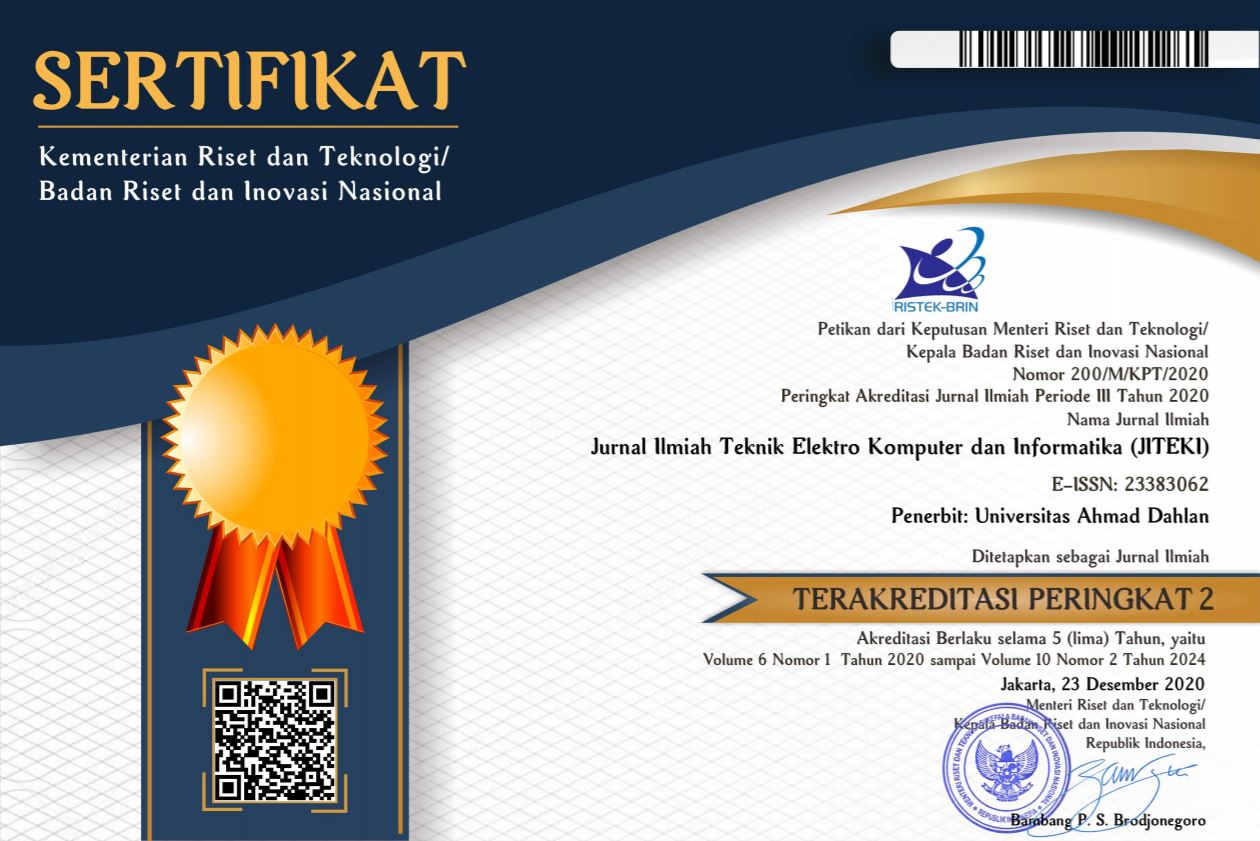The Impact of Vegetation on the Performance of Polycrystalline and Monocrystalline Silicon Photovoltaic Modules
Abstract
The performance of a photovoltaic (PV) module decreases with increasing temperature. An emergent method developed to reduce temperature rise is vegetation that refers to cultivating crops under the shade of PV modules. This study aims to investigate the impact of caisim (brassica chinensis var. parachinensis), a popular tropical vegetable, on the performance of two polycrystalline silicon (pc-Si) and two monocrystalline silicon (mc-Si) PV modules. Initially, electrical parameters, solar irradiation, and temperature of the four PV modules were examined without vegetation. Furthermore, the same management was repeated with a treatment of two PV modules (pc-Si 1 and mc-Si 1) were vegetated and the other two modules (pc-Si 2 and mc-Si 2) were designated as reference modules, left without vegetation. Results of the experiments carried out in clear sunny days and analyzed with a least squares method revealed that, for the modules of the same technology, the efficiency of pc-Si 1 (vegetated) was higher than pc-Si 2 (reference), whereas mc-Si 2 (reference) outperformed mc-Si 1 (vegetated). Test results on mc-Si technology indicated that there was no contribution of vegetation to lowering temperature of the vegetated PV module, thereby failing to improve its efficiency. This might be related to the design and material of the mc-Si modules which support conductive heat losses. The conduction effect seemed to be more dominant than the evapotranspiration impact which may be low due to the wind and the greater distance between the vegetation and the modules. The results of this research imply that it is necessary to consider the application of vegetation for pc-Si technology for the design and optimization of the performance of solar power plants in Kupang, Indonesia. This research contributes to shining a light on the intricate relationship between PV module performance and vegetation. In a broader scope, this study provides a motivation for future investigations regarding efforts to overcome land competition to produce energy and food.
Keywords
Full Text:
PDFDOI: http://dx.doi.org/10.26555/jiteki.v9i4.26911
Refbacks
- There are currently no refbacks.
Copyright (c) 2023 Julius Tanesab, Monalisa Malelak, Marthen Beily, Irvan Helle

This work is licensed under a Creative Commons Attribution-ShareAlike 4.0 International License.
| About the Journal | Journal Policies | Author | Information |
Organized by Electrical Engineering Department - Universitas Ahmad Dahlan
Published by Universitas Ahmad Dahlan
Website: http://journal.uad.ac.id/index.php/jiteki
Email 1: jiteki@ee.uad.ac.id



